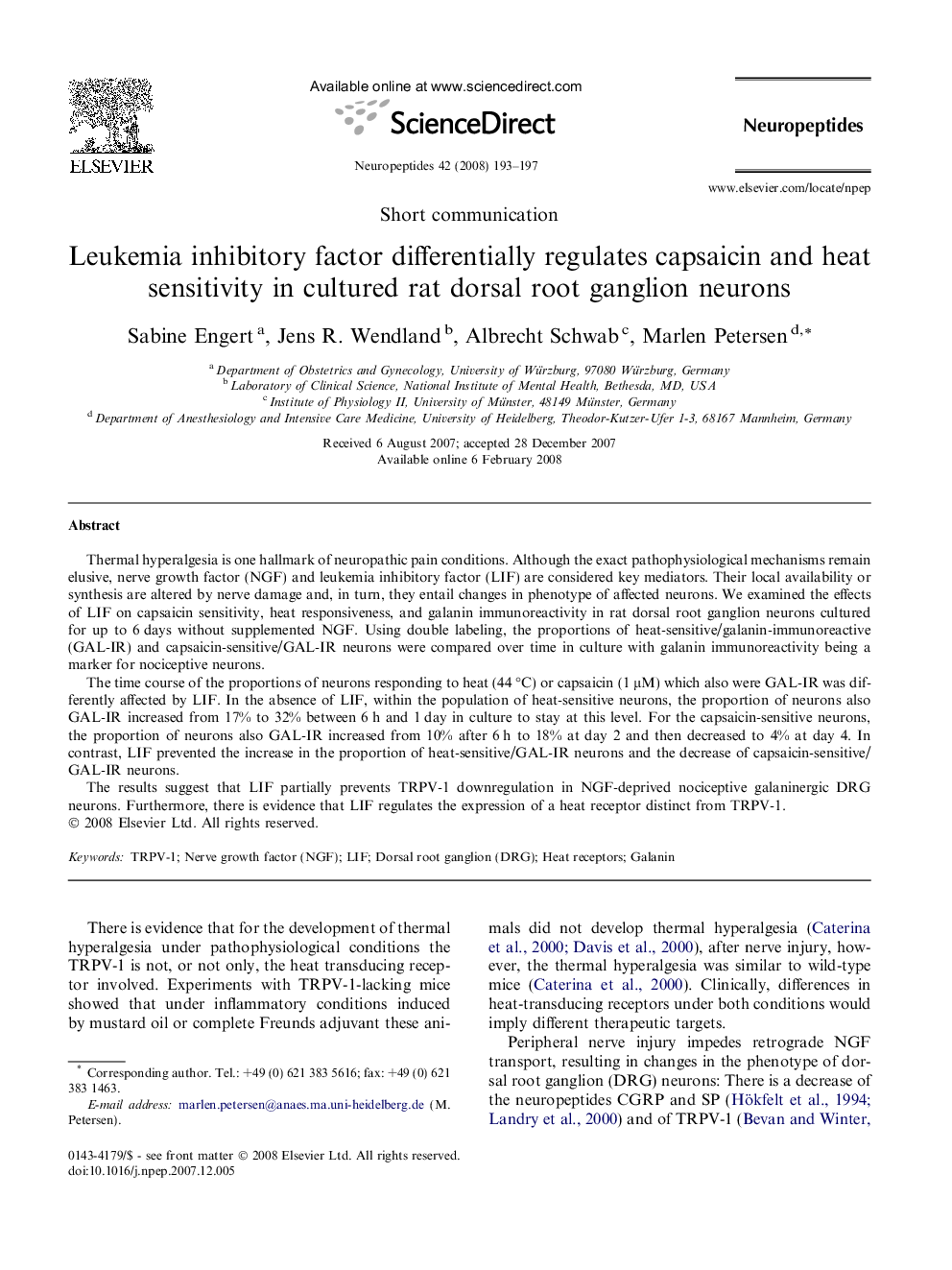| Article ID | Journal | Published Year | Pages | File Type |
|---|---|---|---|---|
| 2808629 | Neuropeptides | 2008 | 5 Pages |
Thermal hyperalgesia is one hallmark of neuropathic pain conditions. Although the exact pathophysiological mechanisms remain elusive, nerve growth factor (NGF) and leukemia inhibitory factor (LIF) are considered key mediators. Their local availability or synthesis are altered by nerve damage and, in turn, they entail changes in phenotype of affected neurons. We examined the effects of LIF on capsaicin sensitivity, heat responsiveness, and galanin immunoreactivity in rat dorsal root ganglion neurons cultured for up to 6 days without supplemented NGF. Using double labeling, the proportions of heat-sensitive/galanin-immunoreactive (GAL-IR) and capsaicin-sensitive/GAL-IR neurons were compared over time in culture with galanin immunoreactivity being a marker for nociceptive neurons.The time course of the proportions of neurons responding to heat (44 °C) or capsaicin (1 μM) which also were GAL-IR was differently affected by LIF. In the absence of LIF, within the population of heat-sensitive neurons, the proportion of neurons also GAL-IR increased from 17% to 32% between 6 h and 1 day in culture to stay at this level. For the capsaicin-sensitive neurons, the proportion of neurons also GAL-IR increased from 10% after 6 h to 18% at day 2 and then decreased to 4% at day 4. In contrast, LIF prevented the increase in the proportion of heat-sensitive/GAL-IR neurons and the decrease of capsaicin-sensitive/GAL-IR neurons.The results suggest that LIF partially prevents TRPV-1 downregulation in NGF-deprived nociceptive galaninergic DRG neurons. Furthermore, there is evidence that LIF regulates the expression of a heat receptor distinct from TRPV-1.
